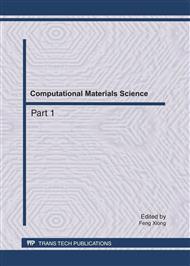[1]
Bell, David, John Deighton, Werner J. Reinartz, Poland T. Rust, and Gordon Swartz. Seven Barriers to Customer Equity Management. Journal of Service Research, 2002, 5(8) 101-211.
DOI: 10.1177/1094670502005001008
Google Scholar
[2]
Nan-Chen, Hsieh. An integrated data mining and behavioral scoring model for analyzing bank customers. Expert System with Application , 2004, 27, 623-633.
DOI: 10.1016/j.eswa.2004.06.007
Google Scholar
[3]
Phillip E. Pfeifer and Robert L. Carraway. Modeling Customer Relationships as Markov Chains. Journal of Interactive Maketing, 2000, 14(2), 43-45.
DOI: 10.1002/(sici)1520-6653(200021)14:2<43::aid-dir4>3.0.co;2-h
Google Scholar
[4]
Phillip E. Mark E. Haskins and Robert M. Conroy, Customer Lifttime Value , Customer Profitability and the Treatement of Acquisition Spending. Journal of Management Issues, 2005, 17(1), 11-25.
Google Scholar
[5]
Park, Young-Hoon and Peter S. Fader. Modeling Browsing Behavior at Multiple Websites, Marketing Science, 23(9) 2004, 280-303.
DOI: 10.1287/mksc.1040.0050
Google Scholar
[6]
Stone, Bob. Successful Direct Marketing Methods[M]. Linco lnwood: NTC Bussiness Books, (1994).
Google Scholar
[7]
Sheng L, Xu X. & Sheng L. Telecom Customers Segmentation based on RFM. academic journal of Harbin Institute of Technology, 2006, (05).
Google Scholar
[8]
Bocheng C. Bin L. Self-organizing map neural network (SOM) in the client application. Systems Engineering Theory and Practice, 2004(3): 7-14.
Google Scholar
[9]
Baesens,B., Viaene,S. , Poel,D., Vanthienen,J., &Dedene,G. Bayesian neural network for repeat purchase modelling in direct marketing. European Journal of Operational Research, 2002, 138, 191-211.
DOI: 10.1016/s0377-2217(01)00129-1
Google Scholar


